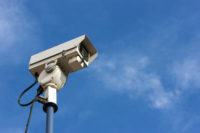As cloud software becomes more widely adopted across the professional security industry, questions around whether it is secure are mounting. Understandably, users may wonder whether cloud video surveillance is secure after the major security failure of a well-established cloud player.
The truth of the matter is that security systems remain high on hackers’ preferred gateways to users’ networks and data. Thus, it’s important to note that, just like other classifications of network-related service providers, not all cloud video surveillance companies are created equal when it comes to security. There are a multitude of factors affecting the security of cloud platforms, from their ownership model to the security protocols they take. And when cloud service providers get security right, cloud usage can be more secure than traditional security systems, both in terms of cybersecurity, video integrity and security operations overall.
The growing popularity of cloud video surveillance
One of the main reasons enterprises (and individuals) are adopting cloud-based security systems is ease of use. Specifically, the cloud allows users to remotely access and control their video surveillance systems. Users can access footage from anywhere, at any time, and video events are easy to download and share. Users can also easily grant trusted associates and partners access to their footage with multi-user permissions.
Equally important, local storage hardware isn’t required for cloud users. Users can store video footage on the cloud, meaning they don’t have to buy or maintain local recorders. However, while cloud security systems are becoming more popular, one of the main reasons that it isn’t being adopted universally is due to concerns about its security.
The shared responsibility model
There are multiple entities that are responsible for the security of cloud video surveillance, including the cloud provider, the cloud platform and the cloud customer. The cloud providers are companies who provide the computing infrastructure to store video for the cloud platform, while the cloud platforms are the companies that provide cloud applications using the cloud infrastructure. For example, cloud platforms that use AWS as their cloud provider include Netflix, Twitch and LinkedIn. For security systems, the cloud customer is the enterprise, security leader or other user of the cloud-based system.
It’s important to distinguish between these different actors, as they all play an integral role in what is called the “shared responsibility model,” in which the security of the system simultaneously falls on the cloud provider, the cloud platform and the end user. The cloud provider is responsible for ensuring the integrity of its resources and equipment. Essentially, the cloud provider has responsibility for the cloud, while those using the cloud have onus for security in the cloud.
The cloud video surveillance company is responsible for keeping their customers' footage secure when transmitting video to the cloud and storing it there. The security leader or user of the platform has responsibility for the security of their system and its devices. They should use unique and strong passwords which they keep private and be sure to keep device firmware updated to remain vigilant against cyber phishing attacks.
While cloud security is a shared responsibility across these different groups, the majority of concern in the professional security industry is linked to the integrity of the cloud platform provider.
The security of cloud video surveillance platforms
As history has proven, cloud video surveillance companies are not all created equal when it comes to security. A major security breach at a well-known video platform provider has given the cloud video surveillance industry a bad name, scaring potential users from adopting cloud-based systems. One of the key mistakes made by this platform provider is that it allowed many employees to access video content from their users. By contrast, only a very limited number of senior employees should have permission to access video content under extreme circumstances when a customer gives permission.
Questions have also been raised about the security of cloud video surveillance solutions provided by key camera manufacturers. However, independent cloud video surveillance companies that add an independent bridge to the security system do not allow device or software suppliers to access users’ video footage.
Another potential security issue, which can be overcome, is to change the default usernames and passwords of cameras and other edge devices upon installation. Using unique strong passwords helps protect networked systems from harmful breaches such as those widely experienced over the last few years.
A common concern held by security system users is the safety and reliability of surveillance footage and making sure it won't “disappear” on the cloud. Traditional security systems with local recorders are vulnerable to accidental damage caused by fire or flooding or deliberate damage by intruders. Backing up locally recorded video to the cloud may remove these risks, and, in some cases, can eliminate the local recorder altogether and record video straight to the cloud.
With local surveillance recording, such systems may have limited storage capacity and may overwrite previous footage. With cloud, enterprises can choose their storage duration and increase capacity when needed. In addition, offsite cloud storage solutions have the ability to notify users when and if a problem with storage or recording ever arises.
Another significant security issue with traditional local recorders is that port-forwarding is often required to allow for internet connection and remote viewing. With port-forwarding users get around their own firewall by creating a hole in their system, possibly leaving it vulnerable to infiltration.
Carefully choose your cloud provider
Cloud’s popularity in the security industry will continue to grow as more users establish proof of performance and share their experiences. The bottom line is that when the proper established security measures are taken, cloud video storage solutions is secure and offers many benefits to the end user.
Selecting the right platform provider will ensure that all the proper security protocols and practices are in place, further accelerating the industry’s inevitable migration to video surveillance in the cloud.




